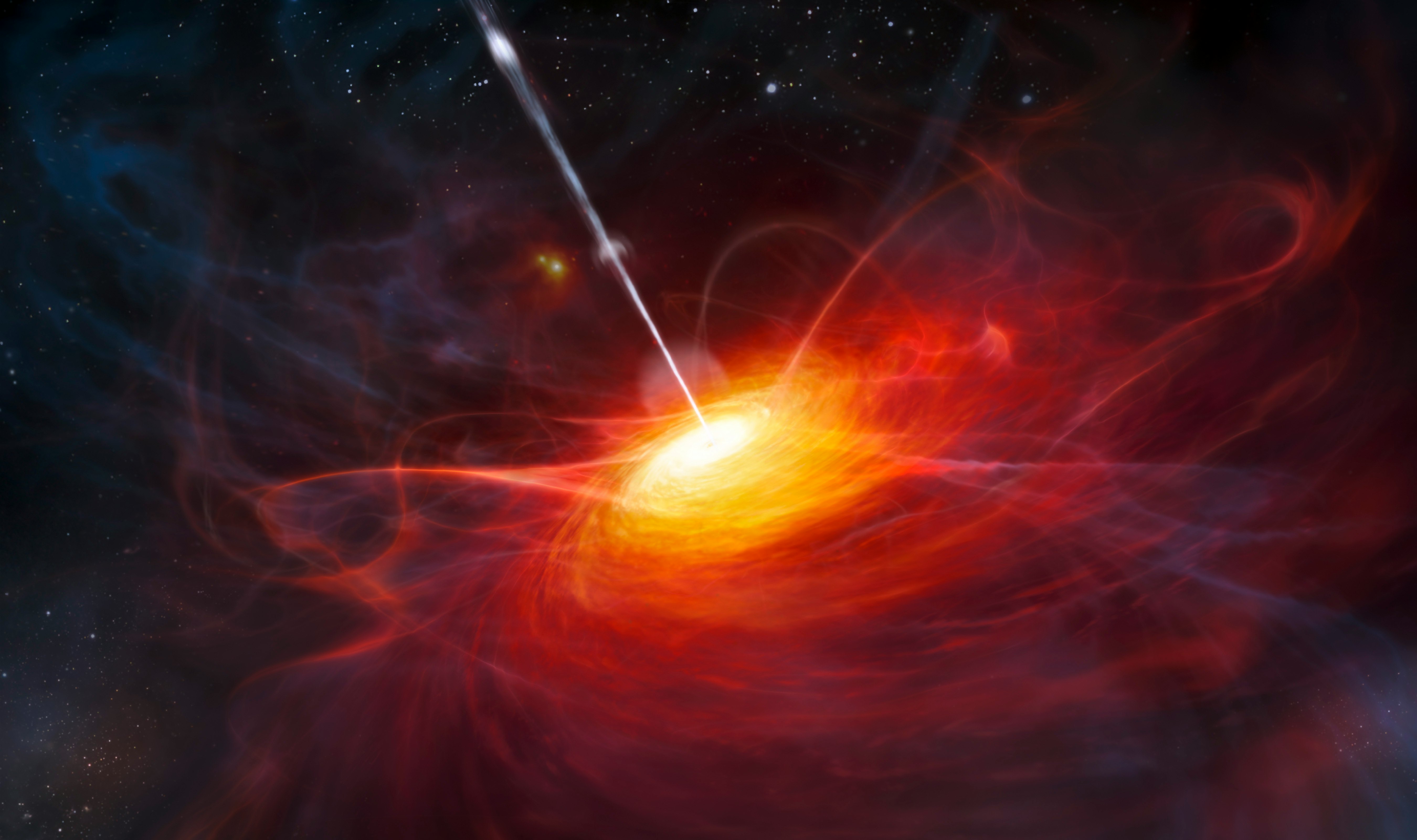
An extreme class of cosmic object called a blazar easily outshines the myriad of stars around it, and helped render the first-ever picture of the Milky Way's heart.
When the Event Horizon Telescope (EHT) team members orchestrated radio dish arrays across Earth to create the first-ever image of the Milky Way’s central and supermassive black hole Sagittarius A*, they toggled back and forth in five-minute chunks of time between this behemoth and the blazar. This went on for hours at a time.
In order to achieve what would eventually become a major scientific highlight of 2022, EHT collaborators had to determine if what they were seeing of Sagittarius A* in April 2017 was the actual cosmic phenomena or the product of hardware hiccups.
To that end, scientists calibrated their instruments with a little help from the bright and steadfast nature of the blazar, employing it like a sort of cosmic litmus test. In a pleasant twist, this blazar has now entered the spotlight, too. Observational astronomer, NASA Einstein fellow, and EHT collaborator Sara Issaoun led a study about the blazar, published August in The Astrophysical Journal.

Here’s the background — The handy blazar is called J1924–2914. It is a faraway, albeit prominent, active galactic nucleus. It houses a supermassive black hole that, like all others, is so heavy that light cannot escape its grasp.
But the material around J1924-2914 is incredibly luminous, whipped around violently by the goliath. The chaos superheats and creates a whole lot of light, potent and compact enough to help astronomers render the supermassive black hole much closer to home at the center of our own galaxy.
All this activity means J1924–2914 fits neatly into the standard definition of a quasar. But it’s a variation on one, boasting an extra special detail. It’s called a blazar because the black hole emits a powerful and narrow jet, which shoots outward in a direction close to our line of sight.
What they did — Astronomers got a better look at this object than ever before, by combining EHT observations with ones performed a few days prior with the Global Millimeter VLBI Array and two weeks later by the Very Long Baseline Array.
They achieved the most robust investigation of this active galactic nucleus to date by peering at the blazar across numerous wavelengths and across several spatial orders of magnitude, achievable via these radio observatories. “We are really able to see far into the jet, and then very close to the black hole, at the same time,” Issaoun says, and characterizes the work as “exciting.”
What they found — The study confirmed that the blazar jet is shaped a bit like a garden hose.
The bend was not varying across time, they found. “This was interesting because it told us that the jet structure is more like a helical [helix-like] jet,” Issaoun says.
There are few scenarios that would cause this, like a peculiar shape to the magnetic field of the black hole. In the brightest part of blazar, where Issaoun’s team think the supermassive black hole is hiding, they took polarization observations that suggest the magnetic field is warped into a toroidal shape. (You can make this shape at home easily, by taking a hair tie or pliable ring in both hands and twisting one side.)
“The EHT observes at higher angular resolution and at the highest frequency ever used in such observations. Both aspects are very important,” Maciek Wielgus, astrophysicist and study co-investigator, tells Inverse.
“They allow us to see details closer to the central engine, or core, than we could ever do before. The resolution of the EHT corresponds to reading a newspaper on the newsstand in New York all the way from London (and not just the article title!),” he says, adding that the increase in resolution is assisted by the transparency of the jet material radiation at higher frequencies, which allows astronomers to look deeper into the system.

What’s next — “We would like to be able to observe this source for a longer time,” Wielgus says. An image of it every week for more than a month, he says, could reveal more about the black hole’s dynamics and how fast the jet is moving. “And we would like to look at more similar objects with the EHT, so that we can study the properties of a whole population.”
Issaoun also wants to see the evolution of the bent jet over time. Future work could utilize many more radio telescopes across many more frequencies to paint a clearer picture.
For now, the team has their guesses. Issaoun says one idea is that it could be a binary black hole. Another possibility is that the accretion disk is tilted with respect to the black hole, creating the hose shape.
Why it matters — Astronomers care about blazars because they are extreme environments. The brightness is capable of traveling billions of light years to us. “ We can learn about the history of the universe that way, sort of a cosmic archeology,” Wielgus says.
If they are bright enough to grab our attention, it’s worth giving them a space in the science literature to shine.







